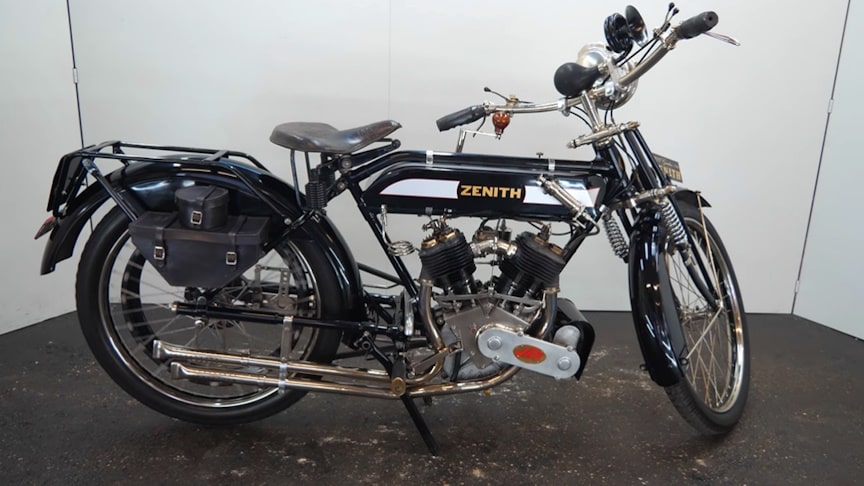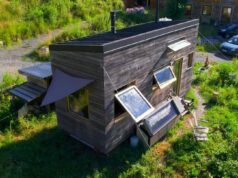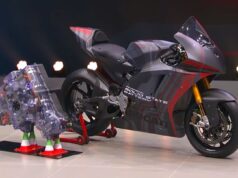This early machine is well rideable with its “clutch” and comes with a pioneer certificate. A machine that is always welcome at every vintage motorcycle event.Zenith motorcycles were manufactured from 1904 until 1950, in a variety of factories in or around London. From the early days proprietary engines were used, such as Fafnir, Precision, JAP, Bradshaw and Villiers. The driving force behind Zenith was Chief Engineer, and company owner, Frederick Barnes, who was responsible for the famous ‘Gradua’ gear.
source.image: classic-motorcycle.com
Worked by a hand-wheel or crank handle, the Gradua mechanism varied the diameter of the engine pulley while simultaneously sliding the rear wheel back and forth in the fork slots, thus maintaining correct belt tension. Its advantages showed most effectively in speed hill climbs, and in pre-WWI days Zenith machines gained many successes as the Zenith rider could change gear during the ascent while the other competitors had to make do with a single choice of ratio. Rival riders and manufacturers thought that this was an unfair advantage so many leading clubs excluded Zeniths from their hill climbs. Zenith was quick to recognise the publicity value and took the word ‘Barred’ as their trademark.
Although the expensive Gradua system gave way to a more conventional Sturmey-Archer countershaft gearbox in the 1920s, Zenith continued to pursue its racing and record breaking activities with enthusiasm. Fred Barnes himself enjoyed considerable success at Brooklands, where in 1922 Zenith rider Bert Le Vack became the first man to lap at over 100mph on a motorcycle – in the rain.
Advertisement
In 1928 a Zenith-JAP ridden by Oliver Baldwin established a world motorcycle speed record of 124.62mph at Arpajon in France, while Joe Wright later raised the record to 150.736mph using his supercharged Zenith-JAP ‘reserve bike’, his favoured OEC having succumbed to mechanical problems. Significantly, when Wright’s record was set, in 1930, the company was temporarily out of business. Despite adding a Villiers-powered economy model to the range, Zenith failed to weather the financial storms of the early ’30s. After a succession of closures and changes of ownership it re-emerged after WW2 with a solitary model: a 750cc JAP-powered sidevalve v-twin, which lasted only a few more years.











